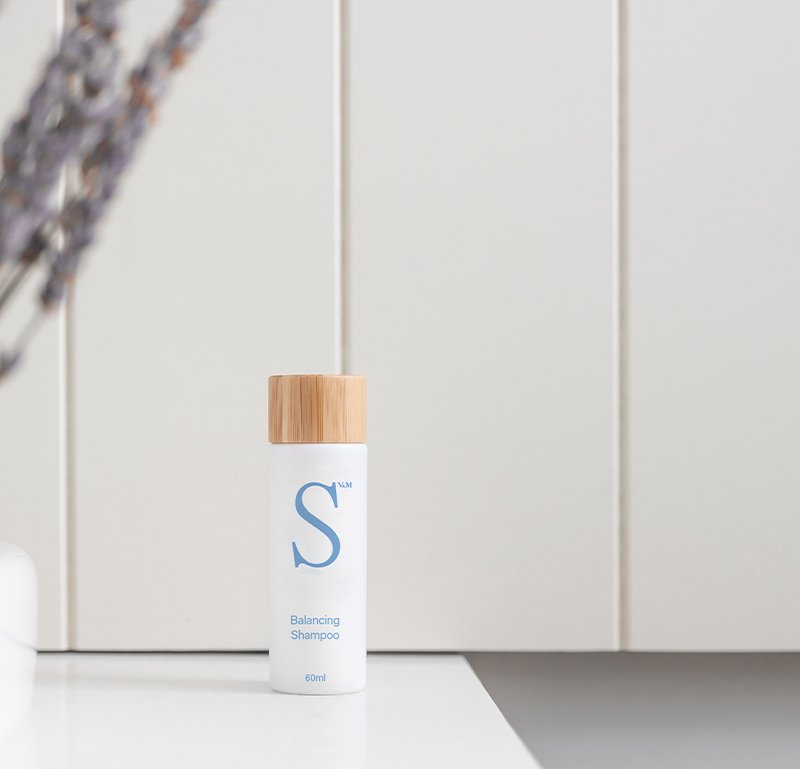Beginners Guide To Growing Your Hair With No Split Ends
Always dreamed of having long hair? Hair experts have devised the perfect combination of shampoo and conditioner for damaged hair, plus damaged hair care products to help. Whether you have fine hair or thick hair, these tips can help you grow long, strong tresses. Here’s everything you need to know about growing healthy hair, free from split ends and damage.
How to tell if my hair is damaged
Before you can grow your hair, you need to know what condition it’s in. The extent of damage will help you know how to start your journey towards longer hair.
How to tell if you have split ends
Split ends are easy to spot. They occur when the outer protective layer of the hair shaft is harmed, revealing the inner layer of the hair. Split ends can result in the hair appearing dry, fragile, and untidy. Moreover, they can contribute to more severe hair issues like breakage and thinning. If your hair tangles easily, especially at the ends, you probably have split ends.
Split ends curly hair: A tricky combination
Split ends can be particularly troublesome for individuals with curly hair. The natural curl pattern makes it challenging for the hair's natural oils to travel down the strands, leaving the ends drier and more prone to splitting. Regular trimming and hydration are essential for managing split ends and maintaining healthy curls. Learn how to repair split ends for all hair types below.
What causes split ends?
Split ends are caused by various factors, but the primary culprits include:
Physical Damage: Excessive handling and styling can lead to split ends. Using harsh hairbrushes, rough towel-drying, or tight hairstyles can weaken the hair shaft and cause it to split.
Heat Styling: Regular use of heat-styling tools like flat irons, curling irons, and blow dryers can strip the hair of its natural moisture, making it more susceptible to splitting.
Chemical Treatments: Hair treatments like colouring, bleaching, perming, and chemical straightening can weaken the hair structure, causing it to break and split.
Environmental Stressors: Exposure to sun, wind, and pollutants can damage the outer layer of the hair, making it prone to splitting.
Lack of Moisture and Nutrients: Insufficient hydration and lack of essential nutrients in your diet can lead to dry and weak hair, making it more likely to develop split ends.
Overwashing: Frequent washing and using harsh shampoos can strip the hair of its natural oils, leaving it dry and susceptible to splitting.
Age and Genetics: As hair ages, it naturally becomes weaker and prone to damage. Some people also have a genetic predisposition toward having fragile hair shafts.
How do I know if I have split ends?
Take a moment to examine the ends of your hair. When you hold up one piece of hair, does it split into two pieces at the end? If so, that’s a clear sign of split ends. The two ends aren’t always split evenly and can even be split into more than two parts. Split ends are just one sign of damaged hair.
What does damaged hair look like?
Split ends are a clear sign of damaged hair. But there are other signs, too:
Hair that won’t grow: Ever wondered do split ends stop hair growth? When your hair continues to break off and stop growing at the same length, it’s likely damaged and has split ends.
Dry and Brittle Texture: Damaged hair often loses its natural moisture and becomes dry and brittle to the touch. It may feel rough and coarse instead of smooth and soft.
Dull Appearance: Damaged hair tends to lose its shine and vibrancy. It may appear lacklustre and have a matte-like finish, lacking the healthy, glossy look of well-nourished hair.
Increased Breakage: Damaged hair is more prone to breakage. You might notice an increased amount of hair fall or shorter strands due to breakage along the hair shaft.
Tangling and Difficulty Styling: Due to the rough and damaged texture, hair may become more prone to tangling. Styling becomes challenging as the hair doesn't hold its shape well and lacks manageability.
How to get rid of split ends to help your hair grow longer
Healthy hair growth requires healthy ends, so getting rid of split ends is key. Here are some failsafe tips from V&M Spa founder and career hairstylist Victoria to repair split ends. For over twenty-five years, Victoria has helped her clients grow their hair, at any age or hair
type, to the long, glossy, youthful hair they have always wanted. Empowering clients to create the hair they have always dreamed of is only 8 simple steps away.
Use the best shampoo for dry and damaged hair Australia
Choosing the right shampoo for your hair type is critical. If your hair is dry and highly coloured, you will need a shampoo that is exceptionally hydrating. If you use dry shampoo regularly, swim in chlorine, or use styling products, you will need to start with a balancing or clarifying shampoo to remove these impurities gently—the same goes if you have delicate hair.
Make sure you wash your hair thoroughly after using shampoo for split ends
We have all done it before; our hair feels dry, so we put a handful of product into our hands and try to spread it through our hair. You and hundreds of women may think you solved your dry hair problems, but did you notice your hair was greasy sooner that week? Even the next day after washing it? It must have been the shampoo you thought, or maybe it’s my hair?
Top tip: Apply the correct amount of shampoo for split ends and thoroughly rinse each product out of your hair before applying the next one. This will set your hairwashing routine up for success.
Stick to the ‘less is more rule’ when it comes to shampoo and conditioner for damaged hair
Use just one pump of shampoo for damaged hair or conditioner for short hair, two pumps for medium-length hair and three pumps for long hair. These guidelines will set you up for success in your hairwashing routine and save you money and time. Victoria recommends scrunching the conditioner through the mid-lengths and ends, working your way up to the roots of your hair, and using your fingers like a wide-tooth comb to detangle any knots gently.
Best treatments for split ends
Using the best shampoo for dry and damaged hair Australia is the key to repairing split ends and helping your hair grow longer. Using hydrating shampoo and treatment conditioner is the perfect combination. Learn more about how to use this powerful duo here.
When to use the best hair products for split ends
All it takes is consistently setting aside one to two hours per week, depending on your hair type, to grow your hair with no split ends. Hairstylist and V&M Spa co-founder Victoria recommends doing this on a Sunday to set you up for the week.
Consistently setting aside this time for you and your hair routine is critical. You don’t want to feel rushed for time, ultimately skipping a step, or worse, not rinsing a product well. The time you put in now will reward you with beautiful hair in the coming months.
Damaged haircare products need to go on your scalp too
Caring for your scalp is a must for every hair type. Massage conditioner onto your scalp every time you wash your hair. Your scalp needs moisture to balance sebum levels. If the scalp is dry, your sebaceous glands go into overdrive to add lost moisture to the scalp. Apply whatever conditioner residue is left on your hands to the roots of your hair and massage it into your scalp.
Top tip: A healthy scalp is the start of healthy hair.
Styling tips to try after using shampoo for split ends
Now that you have mastered washing your hair, you will want to style it so you don’t need to do any touch-ups during the week. Victoria recommends preparing the hair for the week with blowdrying or styling your hair after washing it. This will allow you to wear your hair soft and flowing at the beginning of the week.
Mid-week, apply dry shampoo, and for the remaining days, tie the hair up in a pony or sleek bun, depending on your hair type and length. If you wash your hair less, your hair can repair better and get healthier.
Haircare tips after applying damaged hair shampoo
When drying your hair with a hairdryer, keep the nozzle pointing 45’ down the hair shaft with the temperature set to medium heat. This will prevent the cuticle from being damaged and create a smooth glossy strand of hair. Never hold the dryer nozzle directly onto the cuticle; this will damage the cuticle.
Minimize the use of straightening irons. Your hair type will determine how long you can leave your hair between washes; some hair types can leave their hair for ten to fourteen days, whereas others will need to be washed after five.
Preventing split ends and boosting your hair’s health is key to helping your hair grow longer. Try the tips above and invest in nourishing products catered to boosting your hair’s health. If you’ve always struggled to grow your hair, now is the time to try a new routine. Say goodbye to split ends and hello to long, luscious tresses. We have included links below to some of the products mentioned in this post. If you have any questions or need answers to your hair journey, please reach out. We’re always here to help.

















